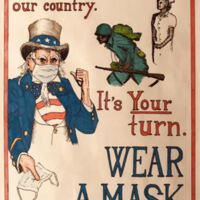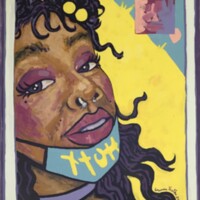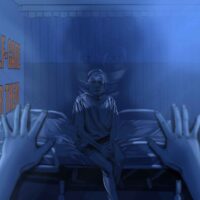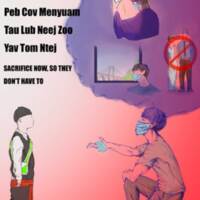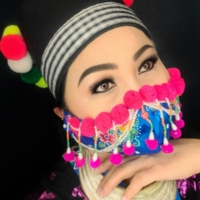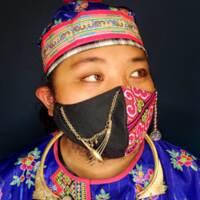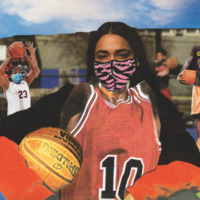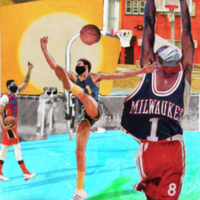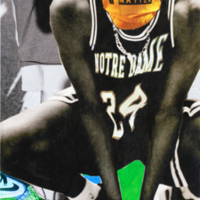COVID Artwork
Dublin Core
Title
COVID Artwork
Description
This collection of artwork mainly features Milwaukee artists who represent different communities of color, specifically the Black and Hmong communities. Many of the pieces in this collection were created to encourage Milwaukee communities to adhere to COVID precautions. A number of the works also allude to larger social narratives as they interacted with the pandemic and the governmental response throughout the year.
Artwork, broadly defined, is pivotal in understanding the impressions and emotions of individuals, cultural groups, and the body politic as they navigate a specific moment in time. At the onset of the Coronavirus pandemic—and the American response to it—artists began interpreting a wide scale of the events and reactions to the year 2020 as it progressed. It became clear shortly after the lockdowns were declared across the country that the pandemic was disproportionately hurting minority communities, the working-class, and other systemically marginalized groups. The U.S. and Wisconsin State government’s response to the virus revealed and exacerbated the existing economic and cultural strife that had been lurking just beneath the surface in America until mid-March of 2020.
The collection prominently displays artwork done for the Creative Health Collective, a Milwaukee-based collective of governmental organizations and artists of color, working “to establish culturally responsive crisis communications with under-served communities in order to reduce COVID-19 related deaths and growing health disparities.” The Creative Health Collective underscores the importance of artists in expressing societal emotion and processing community trauma. “This public health project highlights the critical role creatives and culture workers play in challenging social injustices and igniting change.” These works were displayed outdoors either as installations or used in public service campaigns. Within the collection, expressions of experiences unique to specific communities can be seen, as well as broader themes that Milwaukee, the state of Wisconsin, and the country encountered during the course of the Coronavirus pandemic.
Artwork, broadly defined, is pivotal in understanding the impressions and emotions of individuals, cultural groups, and the body politic as they navigate a specific moment in time. At the onset of the Coronavirus pandemic—and the American response to it—artists began interpreting a wide scale of the events and reactions to the year 2020 as it progressed. It became clear shortly after the lockdowns were declared across the country that the pandemic was disproportionately hurting minority communities, the working-class, and other systemically marginalized groups. The U.S. and Wisconsin State government’s response to the virus revealed and exacerbated the existing economic and cultural strife that had been lurking just beneath the surface in America until mid-March of 2020.
The collection prominently displays artwork done for the Creative Health Collective, a Milwaukee-based collective of governmental organizations and artists of color, working “to establish culturally responsive crisis communications with under-served communities in order to reduce COVID-19 related deaths and growing health disparities.” The Creative Health Collective underscores the importance of artists in expressing societal emotion and processing community trauma. “This public health project highlights the critical role creatives and culture workers play in challenging social injustices and igniting change.” These works were displayed outdoors either as installations or used in public service campaigns. Within the collection, expressions of experiences unique to specific communities can be seen, as well as broader themes that Milwaukee, the state of Wisconsin, and the country encountered during the course of the Coronavirus pandemic.
Creator
Zac Dickhut
Source
Creative Health Collective
Date
May 5, 2021
Contributor
Zac Dickhut
Collection Items
Variation on a WWI poster
Just as posters in the First World War worked to rally Americans behind a national effort, various levels of government and private institutions made a similar push in the fight against COVID-19. This variation on a WWI poster features Uncle Sam…
Self-Care for Them
The creator of this piece, Chong Lee is a recent high school graduate, and a member of Milwaukee’s Hmong community. Lee’s goal in creating was to speak to the younger generations about the importance of taking COVID precautions seriously. In doing…
Sacrifice Now, So They Don't Have To (in Hmong and English)
The creator of this piece, Chong Lee is a recent high school graduate, and a member of Milwaukee’s Hmong community. Lee’s goal in creating was to speak to the younger generations about the importance of taking COVID precautions seriously. In doing…
New Traditions Will Save Our Culture
From the Artist: “This mask represents the cultural symbols of Hmong Nplooj Sev, a well-known style of Hmong clothing. What makes this style stand out is the colorful yarn balls on their hats. The black and white band on the hat is called a siv ceeb…
Viruses Do not Discriminate, People Do
From the Artist: “This is an androgynous piece, a combination of half masculine and feminine forms. The pink coils are often worn mainly by Hmong women and the Qeej, is traditionally played only by men. The Qeej, is a Hmong instrument and an…
McGov (series 1 of 3)
From the artist: “Born and raised in Milwaukee’s Sherman Park neighborhood, I know how important basketball is to our community. I grew up playing Project Respect and Blacktop, attending In the Paint games at the Boys & Girls Club, and catching the…
McGov (series 2 of 3)
From the artist: “‘McGov’ is the creative culmination of these memories and emotions. Three separate scenes come together to form one singular vision of an active, but safe, space to play the game we love. I synthesize my own personal sentimental…
McGov (series 3 of 3)
From the artist: “I want new hoopers to see this collage mural, see Arike’s jersey and remember that girls can ball, too. I want hoopers my age to see hometown hero jerseys like Draelon Burns and remember we produced some great players here. I want…
Oral History Interview with Sarah Senn
This is an oral history interview with Sarah Senn, an artist and art instructor at Waupun Area Junior/Senior High School. Her account discusses her experience of the COVID-19 pandemic from multiple perspectives, notably as an educator and an artist.…

